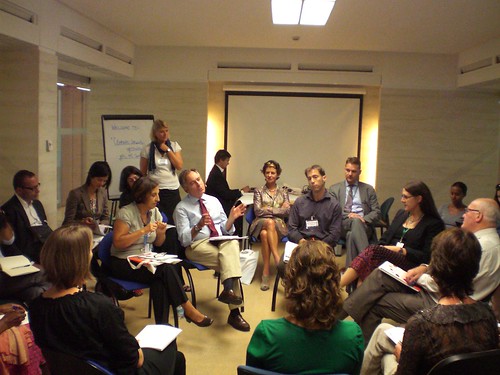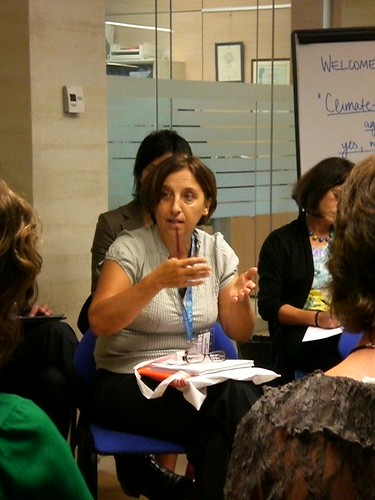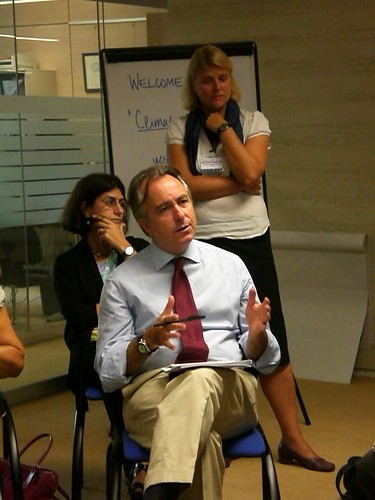Photos by Gauri Salokhe (FAO)
Yesterday we had an intense and lively discussion on “What is climate smart agriculture” using the “fish bowl” knowledge sharing method. Fish bowl means that there is a core group of speakers while the rest of the room, arranged in circles around them, listens in. The fun part is that the core group evolves as audience members join the “inner circle” one at a time, and the original speakers leave, one at a time, so that the discussion is enriched by lots of different perspectives.
Our core group consisted of Elwyn Granger-Jones (IFAD), Carlo Scaramella (WFP), Marja-Liisa Tapio-Biström (FAO) and Cristina Grandi (IFOAM). Our audience was not shy, and everyone had experience and specific knowledge to contribute. More than half of the 30 participants entered the “fish bowl” during the course of the session.
There was no consensus on exactly what climate smart agriculture is or should be. But – there are boundaries that seem to be forming. For example, most agreed that perhaps 80% of CSA is made up of what we already know how to do and are trying to do (sustainable agriculture approaches such as integrated pest management, organic and conservation agriculture). However, there is a tricky and evasive 20% of CSA that is new, linked to emerging challenges that climate change brings about, and riddled with uncertainty.
There was also consensus that the concept is strongly influencing the planning and thinking of the ARD development community, and that it presents an opportunity to catalyze the move towards an integrated, cross-sectoral approach to agriculture and food security linking it with other challenges to sustainable development and poverty reduction. Yes, mindsets are being changed already, but what is missing is a global vision for agriculture, including the role of smallholders, that climate smart practices would fit into. We need this!
Speakers also agreed that in order to make the transition to climate-smart agriculture happen, more needs to be done: to better assess the vulnerability of farmers, including smallholder farmers; to create policy environments that incentivize and reward climate smart practices; to connect smallholder farmers to seasonal climate predictions and trends through sms and other ICT solutions for short and long term planning; to support education and extensions services; to facilitate access to new technologies like drought resistant seeds; and, to mainstream CSA into agricultural and rural development policies, because in spite of new climate funds, that is where the bulk of the money will remain.
Perhaps the strongest point of consensus was that farmers are natural adapters. Climate change is happening too fast and creating too much unpredictability for them, though. So there is no time to waste in helping the poorest to adapt. In addition – let’s not forget that the majority of the best examples of adaptive systems are traditional practices that have been with us for centuries. Case in point is the oases of the Maghreb. In these systems, water is used efficiently and livestock needs are integrated into cropping systems, for example. Let’s not waste time or money to reinvent the wheel.




No comments:
Post a Comment